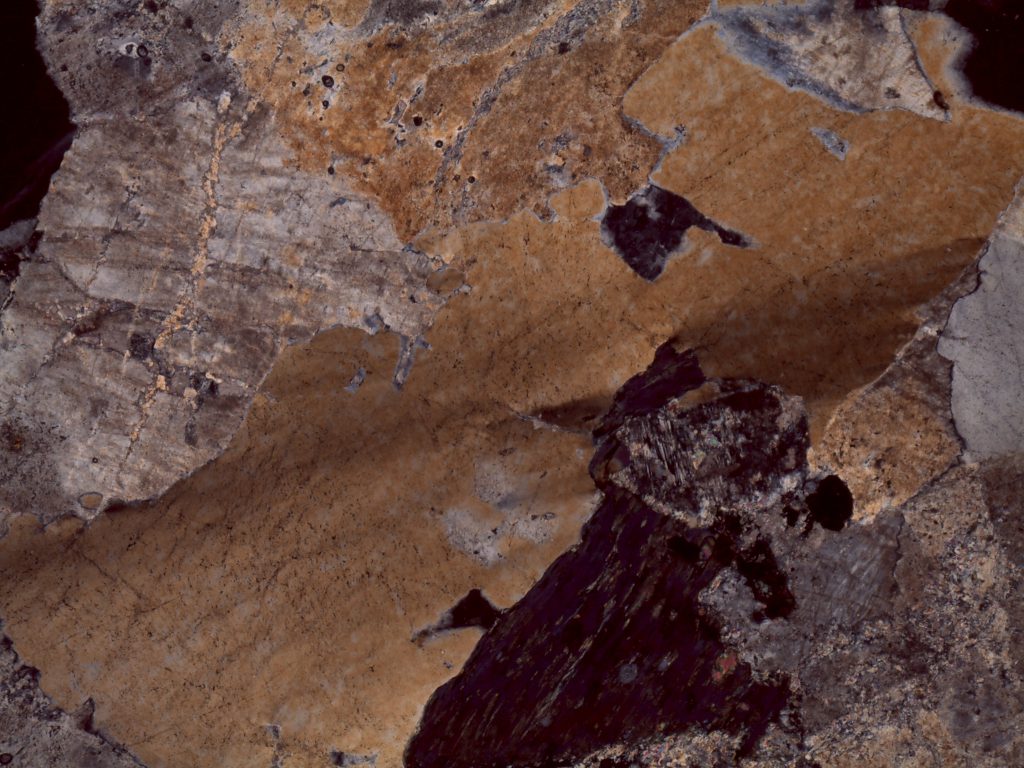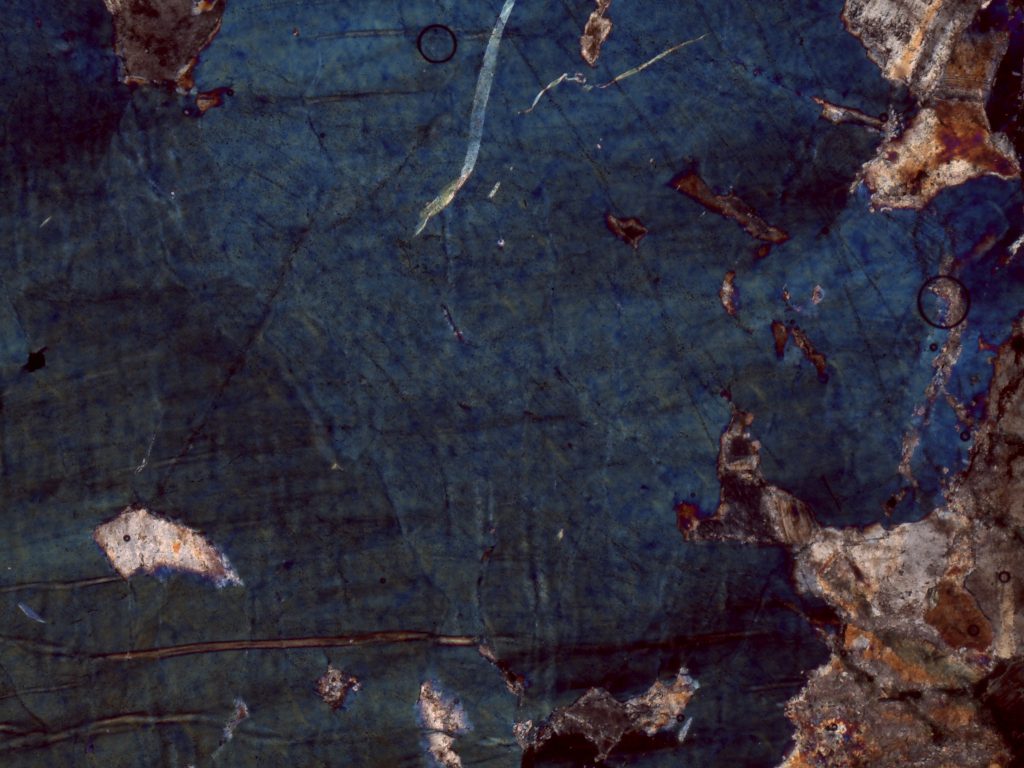As we all know, the ideal thin section is 30 μm thick. If your thin section isn’t thin enough, your minerals will show wrong and confusing interference colors in crossed polars. (It makes no difference in plane polars.)
Here’s quartz that’s a few microns too thick. In crossed polars, it displays first-order yellows instead of the first-order grays you should see. You should still be able to recognize quartz by its extinction, and sometimes you’ll be able to spot areas of first-order gray in the grain. For example, look at the edges of this one.

Here’s a quartz sandstone where some of the clasts are 30µ and many are about one order too thick.
Similarly, this plagioclase grain is just thick enough to display first-order yellows instead of its normal first-order grays. You’ll still be able to recognize plag by its twinning.

Note: this particular grain is fairly heavily sericitized (that is, altering to fine-grained white mica).
It’s unlikely that you’re ever going to run into anything this thick in your professional life, but perhaps it can serve you as a cautionary tale . . . or just give you a grin.
This is also quartz, and it’s much more than just a few microns too thick. It’s so thick that it’s displaying high-order blues along the lines of what you might see in augite or diopside. Your friendly author knows this rock well: she’s made dozens of thin sections of it herself, and she oversaw the student who made this one. She assures you that this very definitely is quartz.
Also note the fibers and the air bubbles.
